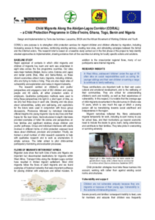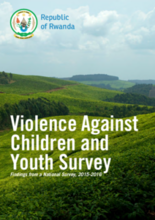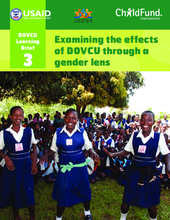Demographic Data
|
Sources: World Bank, UNICEF, UNDP HDR 2015, DHS 2011 |
Displaying 8571 - 8580 of 14391
This research brief is based on a baseline study carried out in the first phase of the Child Migrants Along the Abidjan-Lagos Corridor (CORAL) project to help identify situated approaches to implementation, drawing evidence from all five countries but aiming for locally specific actions and solutions.
This infographic, and accompanying answers to Frequently Asked Questions (FAQs), describes Adverse Childhood Experiences (ACEs) and their relationship to toxic stress, and explains the impacts of ACEs on children's development.
This report presents findings from the national Violence Against Children Survey (VACS), administered in Rwanda from 2015-2016, and lays out recommendations for addressing and preventing violence against children based on those findings.
This learning brief analyzes quantitative data from the second of the “Deinstitutionalization of Orphans and Vulnerable Children in Uganda” (DOVCU) project’s stated objectives: examining the extent to which DOVCU project interventions decrease vulnerabilities for reintegrating children and their families.
This learning brief analyzes quantitative data from the first of the project’s stated objectives: examining the extent to which “Deinstitutionalization of Orphans and Vulnerable Children in Uganda” (DOVCU) project interventions decrease vulnerabilities for households and children at risk of separation.
This learning brief analyzes quantitative data from both households at risk of separation and reintegrating households to understand how the “Deinstitutionalization of Orphans and Vulnerable Children Project in Uganda” (DOVCU) package of integrated social and economic interventions affects children and households differently depending on the sex of the child, caregiver, and/or household head.
This report summarizes the main findings of the ‘Study on Violence against Women and Violence against Children,’ conducted in Albania, Belarus, Kazakhstan, the Kyrgyz Republic, Moldova, Turkey and Ukraine from 2016 to 2017, to identify major areas of overlap between intimate partner violence (IPV) and violence against children (VAC).
The resources in this packet have been developed to support Australian schools to navigate the complexities of engagement with orphanages and residential care institutions overseas as part of service learning and international study programs.
The objective of this study was to establish the types of abuse experienced by adolescents with mild and moderate symptoms of anxiety disorder and living in charitable children’s institutions (CCIs).
The chapter presents a critical analysis of the reception system for non-asylum seeking unaccompanied migrant children in Calabria, a region of South Italy.







